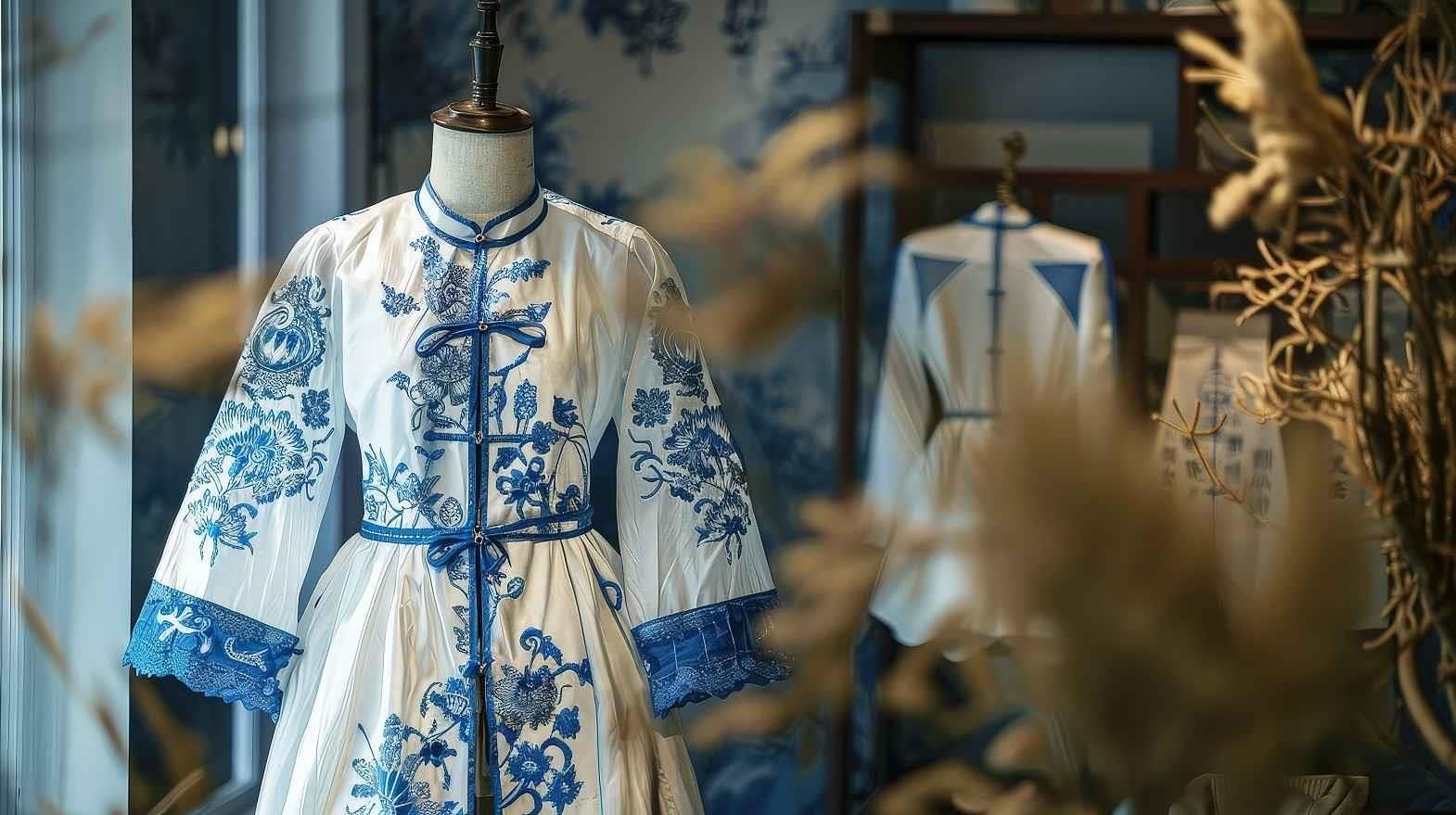Embroidery is a very old and well known art of China. In China, Embroidery is not ruled by only women but men and women both are involved in this art. There are two main division of Chinese Embroidery, "Chih wen" and "Tuan chen". In "Chih wen" long and short stitches are used to embroider the cloth while in "Tuan chen" the seed stitches are taken. This stitch is also known as the French knot in Beijing. There are many types of stitches used by Chinese, such as:
- Satin stitch
- Long satin stitch
- Short satin stitch
- Beijing stitch or French knot
- Stem stitch
- Couching
- Chain stitch
- Split stitch
Styles of Chinese Embroidery
Su Embroidery
This embroidery is short name for Suzhou. Su embroidery reflects tranquility, refinement, vividness and elegance. In history, Su Embroidery dominated the royal wardrobe and walls. Even today, Su Embroidery occupies a large share of the embroidery market in China as well as in the world.
Su embroidery is praised as 'The Pearl of Oriental Art'
Shu Embroidery
Shu embroidery is influenced by its geographic environment and local customs. Full name of this embroidery is Sichuan embroidery. Shu embroidery is characterized by a refine and brisk style. This embroidery originated among the folk people in the west of Sichuan Province. Shu embroidery formed its own unique characteristics: smooth, bright, neat and influenced by the geographical environment, customs and cultures. The works incorporated flowers, leaves, animals, mountains, rivers and human figures as their themes. The craftsmanship of Shu embroidery involves a combination offine arts, aesthetics and practical uses, such as the facing of quits,pillowcases, coats, shoots and screen covers.
Xiang Embroidery
Xiang Embroidery- where the word 'Xiang' means 'human art', is a reflection of the ancient Xiang (Hunan) and Chu (Hubei) culture. This embroidery used to be a gift to the royal family during the spring and autumn period. Xiang embroidery became a special branch of the local art after the span of two thousand years since its origin. The embroidery is patterned after a painting draft; bringing it to live, and this is the specialty in this embroidery. Due to this bring in life technique in Xiang embroidery a flower seems to be spreading fragrance, a bird seems to be singing, a tiger seems to be running and a person seems to be breathing.
Yue Embroidery
Yue Embroidery, which encompasses Guangzhou Embroidery and Chaozhou Embroidery, has the same origin as Li Brocade. It is believed that Yue Embroidery started from Tang Dynasty since Lu Meiniang, who embroidered seven chapters of Buddhist sutra, and was from Guangdong. Portrait of flowers and birds are the most popular themes of Yue Embroidery as the place of embroiderys origin is surrounded with the subtropical climate that favours the area with abundant of these plants that are rare seen in central China. In addition, Yue Embroidery uses rich colours for strong contrast and a magnificent and bustling effect. The most famous piece of Yue style embroidery is hundreds of Birds worshiping Phoenix. Fish, Lobsters, Bergamots and Lycheeare also common patterns.
Gu Embroidery
The roots of Gu embroidery can be traced to Gu Mingshi's family during the Ming Dynasty in Shanghai, and it is also known as Lu Xiang Yuan embroidery. Gu embroidery specializes in painting and calligraphy.
Bian Embroidery
This embroidery was regarded as a national treasure during the Northern Song Dynasty. Bain refers to the capital of the Northern Song Dynasty, today's Kaifeng. Bian Embroidery was mainly used by the royal family so it was also known as Court Embroidery or Official Embroidery. The style was exquisite, precise and elegant to match the demeanor of the royal family. However, with the collapse of the dynasty, Bian Embroidery collapsed too.
Han Embroidery
Han embroidery was originated from Chu (Hubei Province) and was passed to Wuhan, Jingzhou and Shashi. Tinted by the Chu Culture, Han Embroidery is characterized by rich and gaudy colours with bold patterns and exaggerated techniques. Han Embroidery came to its heyday in the middle and later Qing Dynasty and won recognition as well as accolades during many international expos and competitions.
Embroidery by Ethnic Groups
Among ethnic groups, Bai, Bouyei and Miao people are also adept at embroidery. Their embroidery uses sharp contrast of colour and primitive design that invokes mystery in the piece of art.
References
http://www.asia-art.net/chinese_embroid.html
http://en.wikipedia.org/wiki/Chinese_embroidery
http://www.travelchinaguide.com/intro/arts/embroidery.htm








Comments